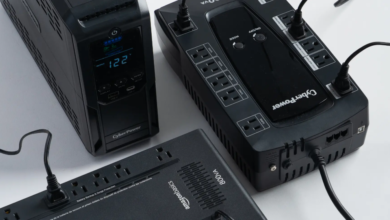Liveness Detection Technology: A Key to Streamlined Identity Verification Process

In a world where identity fraud and cybercrime have become widespread, an individual’s personal information is at risk of being forged or misused. The easy access to online information has led scammers to commit identity theft and breach an individual’s data. To mitigate the risk of such identity forging, businesses need to incorporate strong biometric identity verification technologies.
Liveness detection is a biometric check that can mitigate identity fraud by providing an additional security layer to the user’s information. Liveness detection technology is an advanced identity verification method that determines whether the biometric sample is a real person or a fake entity. It detects spoofing attacks and any fraudulent activity that may breach the customer’s personal information. In 2021, a survey showed that 53% of industry professionals believe that a biometric liveness check is crucial for secure identity verification.
Types of Liveness Detection Technology
The liveness detection technology is classified into active, passive, and 3D detection depending on the user interaction.
Active Liveness Detection
Active liveness detection is a way to detect a person’s identity by prompting them to perform specific tasks such as blinking, waving, and head tilting. This technique helps detect fake identities as they may be unable to perform these real tasks. It detects an individual’s pupil movement, which analyzes whether the subject is real or a spoof. An advanced liveness detection solution has very detailed requirements, which makes it nearly impossible for scammers to bypass them.
See Also Reasons Why DHMO Dental Plans Are Essential for Your Oral Health
Passive Liveness Detection
Passive liveness detection is a process that verifies a person’s identity without their knowledge. This feature detects biometric characteristics such as skin texture, blood flow rate, and blink rate. It can also help detect the presence of a deepfake because it does not indicate that a person is being tested.
3D Liveness Detection
A 3D liveness detection is an advanced form that verifies a person’s identity by detecting their unique physical features. It creates a 3D map of the face which ensures that the person is not an imposter. It provides enhanced security while verifying personal information.
Liveness Detection Methods
Motion Analysis
This motion detection method is used to detect full body movements of a person. It tracks a person’s micromovements involving blinking, head tilting, and moving eyes. A live person will perform these movements involuntarily, whereas a spoofing entity would perform repetitive movements. Through these motion detections, the examiners can easily figure out the presence of a fake entity.
Texture Analysis
This face detection method examines variations in natural and artificial skin textures. Every individual has a unique skin texture that a fake entity cannot replicate. Artificial entities lack these detailed textures, which allows liveness detection algorithms to rule out counterfeit identities.
Infrared Image
This is a process in which a lens detects human-specific wavelengths that can not be seen with the human eye. An actual human being possesses these wavelengths, but a fake entity can’t produce them. It allows businesses to track whether a real person is being verified or not.
3D Depth Sensoring
Advanced detecting services use structured lights to create a detailed 3D map of a person’s face. This helps differentiate between a live person and a pre-recorded 2D image. It is a rigorous verification method that prevents unauthorized identities.
Why is Liveness Detection Crucial for Identity Verification?
Liveness detection technology is important for businesses because it improves their verification process while protecting the customer’s information from identity theft and spoofing attacks. It is beneficial for the following reasons:
Prevention of Spoofing Attacks
Through liveness detection, businesses can detect unauthorized impersonation of a person’s identity. This feature can reduce the amount of spoofing attacks as it ensures that the live facial features belong to a real human being. It validates the presence of a live person by prompting users to show real facial movements.
Improved Regulatory Compliance
Biometric liveness detection complies with KYC and AML regulations. It prevents agents from disclosing this information to imposters. It also helps business entities maintain a positive reputation, which is crucial for their growth.
Improved Customer Trust
Companies can enhance their customers’ trust by incorporating biometric liveness detection in their operations. This assures them that their identity information is handled with utmost care. This feature reduces data breach risks, which boosts the company’s reputation.
Cost Effectiveness
The use of liveness detection secures the companies from financial losses. It blocks the occurrence of possible fraud and identity theft. This fraud reduction will lead to less spending on reputation repair and legal expenses.
Final Thoughts
Liveness detection technology is a very innovative verification service that can benefit the business operations and protect them from spoofing attacks. It can enhance the verification process because it rules out all the fake entities by carefully screening the customers through texture and motion analysis. By doing this, customer’s trust is enhanced and company’s reputation is improved.



